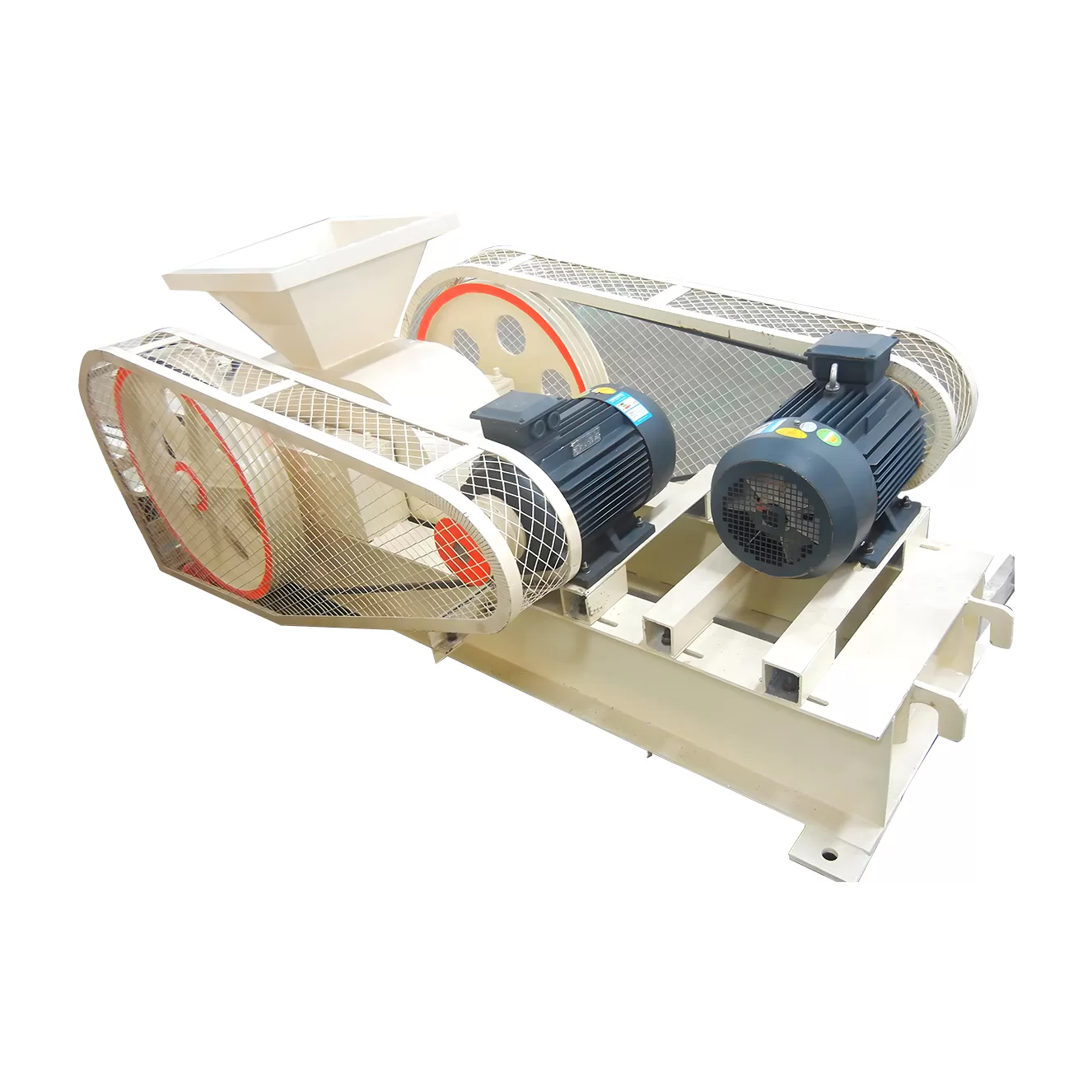全站搜索
ابحث في الموقع الإلكتروني بالكامل
ابحث في الموقع الإلكتروني بالكامل
Roller crusher is also known as roll crusher, which relies on the high-speed rotation of roll wheel to crush materials. The commonly used roll crusher types include double roller crusher, toothed roller crusher, four roller crusher, etc.
Roll crusher, as one of the most economical and practical crushers, is designed to handle the first and second crushing of friable minerals and stones such as coal, clay, coal gangue, limestone, slag, cement clinkers, and shale, etc.
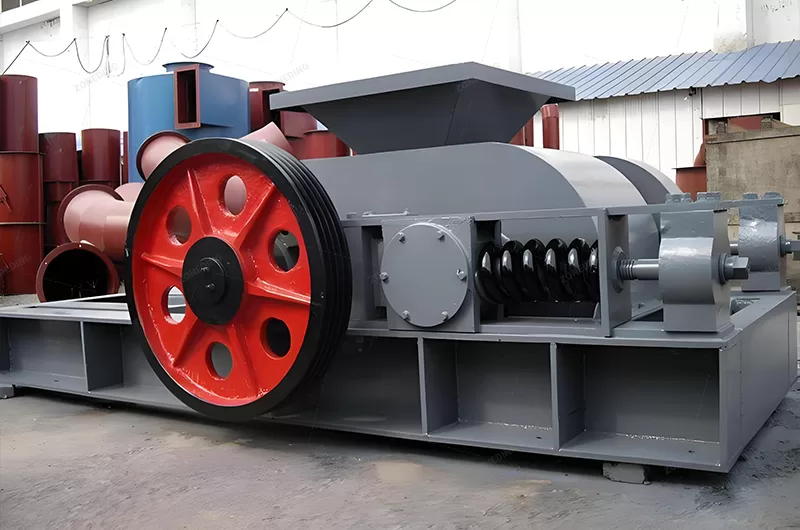
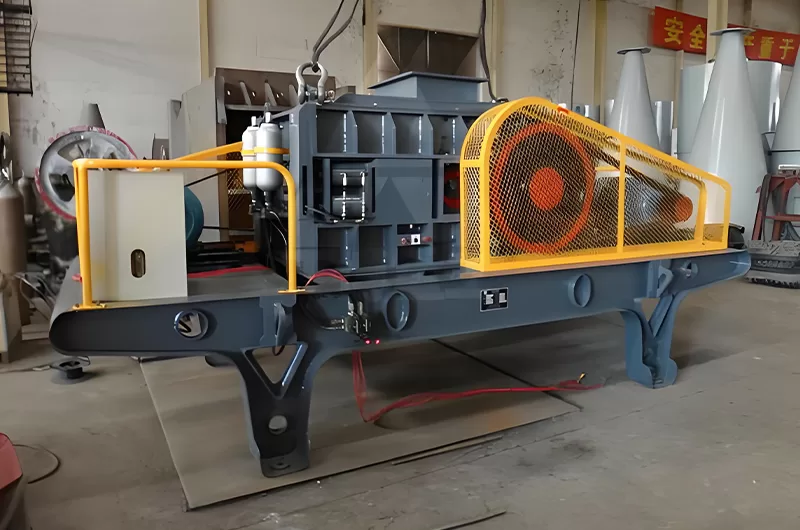
Roll Crusher is suitable forRiver gravel, iron ore, limestone, basalt, quartz, granite and other medium or hard ores and rocks in metallurgy industry, cement industry, power department, construction, phosphate, refractory industry, etc.
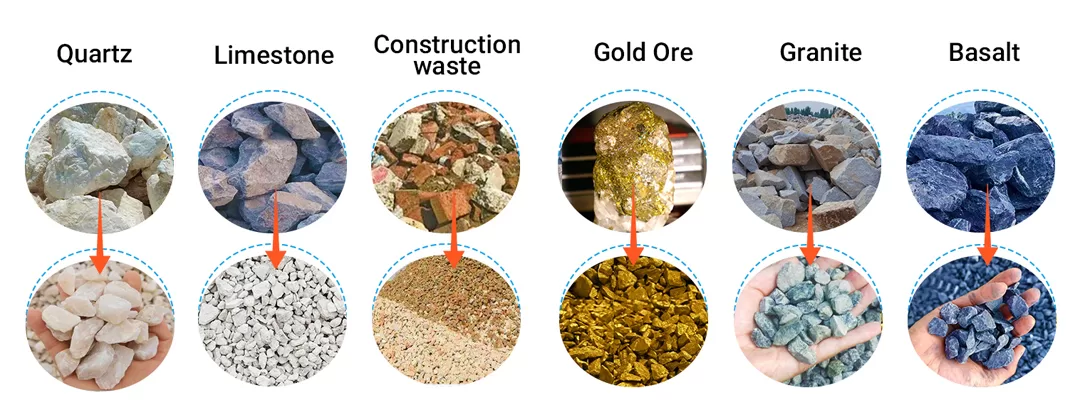
The counter-roller crusher pulls the material on the roller surface into the crushing cavity, so that the material is crushed by the stress mainly caused by squeezing, and is taken out of the crushing cavity by the rotating roller and discharged as the crushed product.
According to the surface of rolls, it can be divided into smooth roll crusher and toothed roll crusher. (The following roll crusher refers to “smooth roll crusher”.)

Our company produces 3 types of roll breakers: Roller crushers,Toothed rollers and hydraulic rollers.
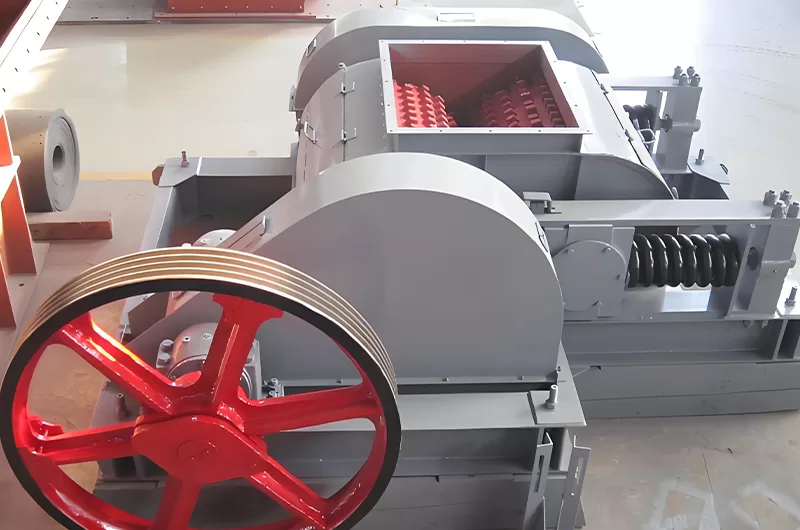
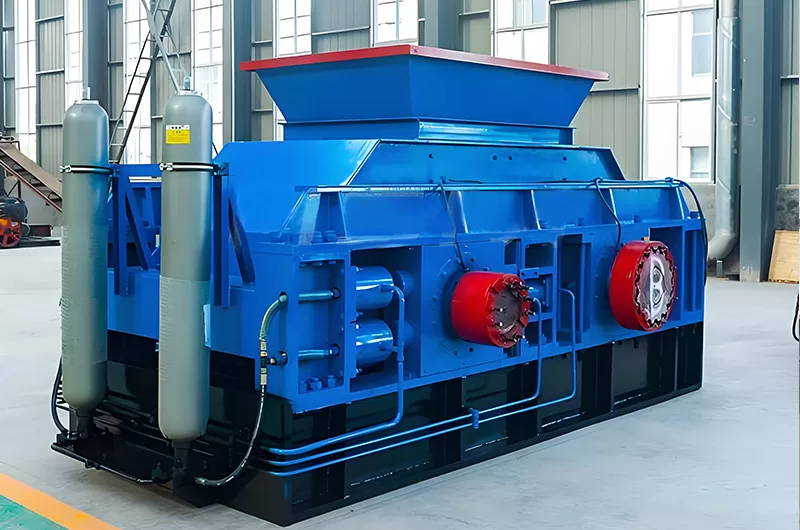
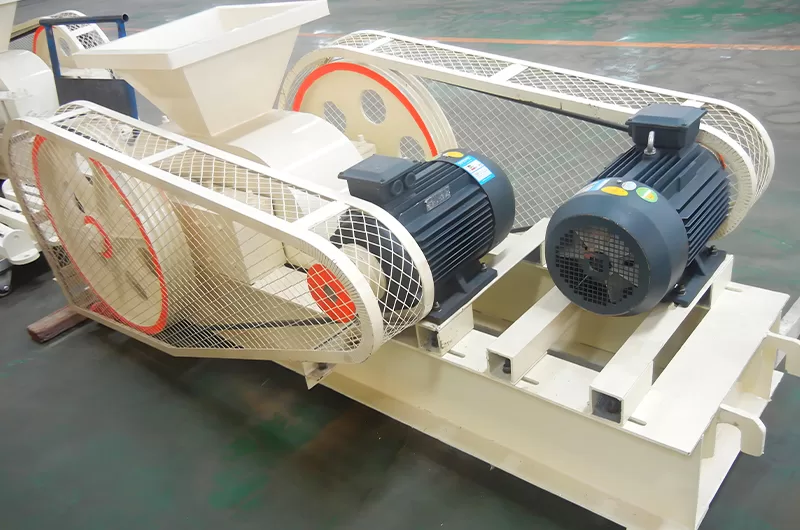
The main working parts of the roller crusher is the cylindrical rollers. The rollers are supported by the fixed and movable bearings, and they are relatively rotating which are driven by the motor. The materials are crushed by the friction of the rotating rollers, and the finished products are discharged from the gap of the rollers.
The spring is used to balance the pressure generated between the rolls. If there are non-crushed materials falling between the two rollers, the compression spring of bearings can be pushed to make a large gap so that non-crushed materials can be discharged immediately.
After the non-crushed materials are discharged, the spring can help recover the gap between the rollers to the original condition and the roll crusher continues to work.
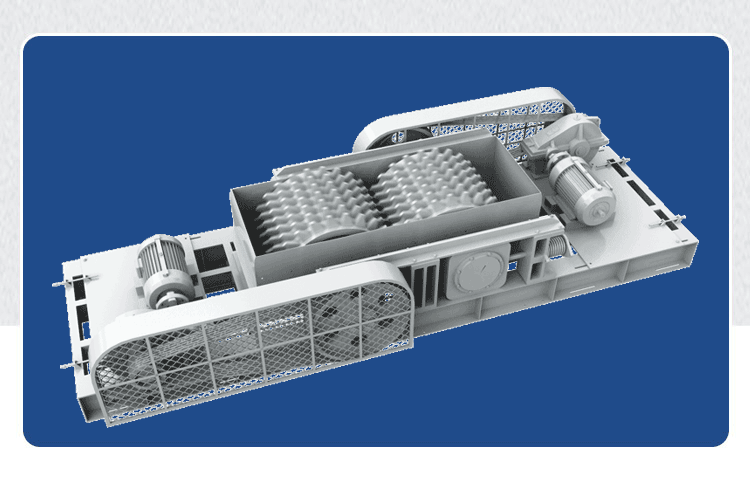
| الطراز | 2PG0425 | 2PG0640 | 2PG0740 | 2PG0850 | 2PG1060 | 2PG1260 | 2PG1560 |
| Roller Diameter(mm) | Ф400 | Ф600 | Ф700 | Ф800 | Ф1000 | Ф1200 | Ф1500 |
| Roller Width(mm) | 250 | 400 | 400 | 500 | 600 | 600 | 600 |
| Input Size(mm) | ≤25 | ≤25 | ≤25 | ≤25 | ≤30 | ≤30 | ≤30 |
| Discharging Gate(mm) | 2-8 | 2-8 | 2-8 | 2-8 | 2-10 | 2-10 | 2-10 |
| Processing Capacity(t/h) | 5-10 | 10-20 | 15-30 | 20-40 | 30-50 | 40-70 | 60-110 |
| Power Models | Y132M-6 | Y180L-6 | Y200L-4 | Y225M-4 | Y250M-4 | Y315M-6 | Y315L-6 |
| Motor Power(kw) | 5.5×2 | 15×2 | 30×2 | 45×2 | 55×2 | 75×2 | 110×2 |
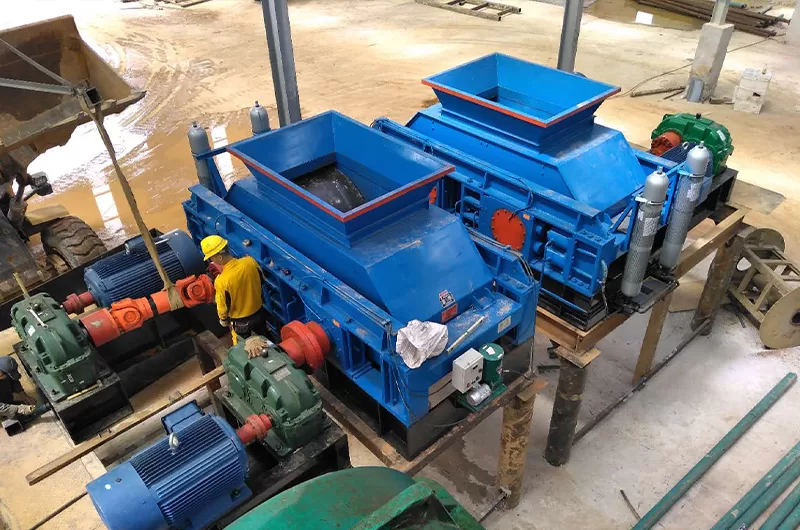
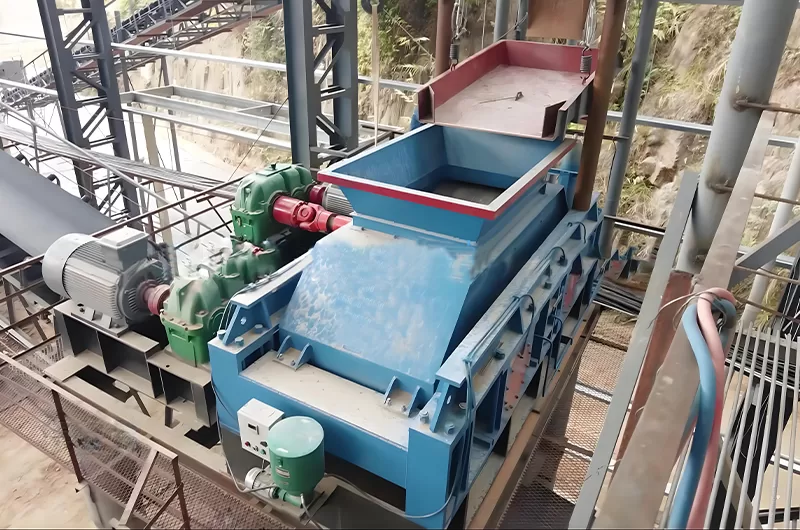
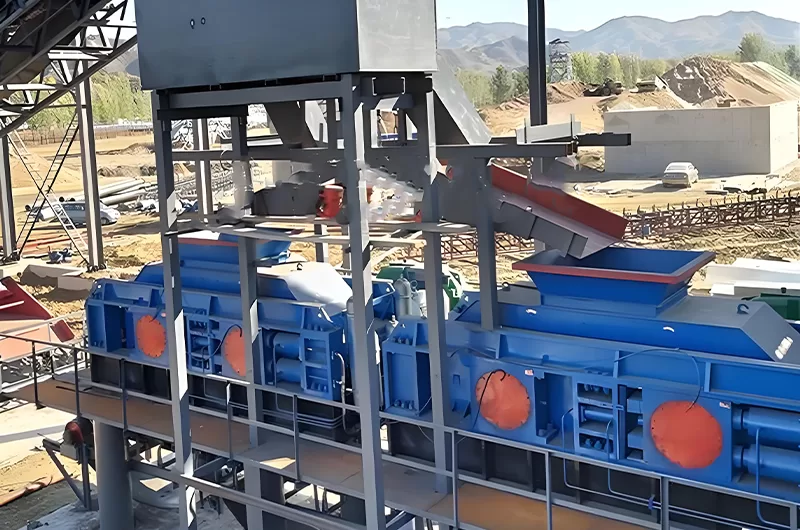
الإجابة: تشمل العوامل الرئيسية التي تؤثر على الفصل حركة الطاولة (الشوط والتردد)، وحجم الماء وانحداره، ومعدل التغذية وتركيزها، وحجم جسيمات مادة التغذية وشكلها. الضبط المناسب لهذه العوامل أمر بالغ الأهمية للفصل الفعال. يجب التحكم في المنحدرات الطولية والعرضية للطاولة بدقة. يجب أن يكون تركيز التغذية مناسبًا أيضًا، عادةً 20-30% للمعادن الخشنة و15-25% للمعادن الدقيقة.
الإجابة: يتضمن التشغيل مراقبة سطح السرير وضبط المنحدر وتدفق المياه ومعدل التغذية. تتضمن الصيانة الدورية فحص الأجزاء المفكوكة، وتشحيم المكونات المتحركة، وفحص التآكل، وتنظيف سطح الطاولة. يجب إجراء الصيانة الوقائية بانتظام، على فترات تتراوح من كل شهر إلى مرة واحدة في السنة.
الإجابة: يمكن أن تشمل المشكلات الشائعة اهتزاز الطاولة أو القطع المتقطع، أو التوزيع غير المتساوي للمواد، أو سوء الفصل. قد يتضمن استكشاف الأعطال وإصلاحها التحقق من وجود براغي مفكوكة، أو نوابض تالفة، أو اختلال المحاذاة، وضبط شد السير، وفحص المكونات الكهربائية، والتأكد من التشحيم المناسب. إذا كان هناك ضوضاء غير عادية، فحدد المصدر وقم بإزالة المشكلة.
الإجابة:
المزايا: توفر طاولات الاهتزاز نسب تخصيب عالية، وهي سهلة التشغيل نسبيًا، وتنتج مناطق فصل مرئية، مما يسمح بسهولة التعديل والمراقبة. وهي مناسبة لمجموعة واسعة من أحجام الجسيمات وكثافاتها.
العيوب: وعادةً ما تكون قدرتها الإنتاجية أقل مقارنةً ببعض الطرق الأخرى مثل الرقصات أو الحلزونات. كما أنها تتطلب مساحة كبيرة نسبيًا وتستهلك كمية كبيرة من المياه.
الإجابة: يعتمد الاختيار على المواد التي تتم معالجتها، والإنتاجية المطلوبة، ونطاق حجم الجسيمات. وتشمل العوامل التي يجب مراعاتها مساحة السطح، وطول الشوط، وتصميم المنحدر. يوصى بالتشاور مع الشركة المصنعة أو الخبير لتحديد التكوين الأمثل.
